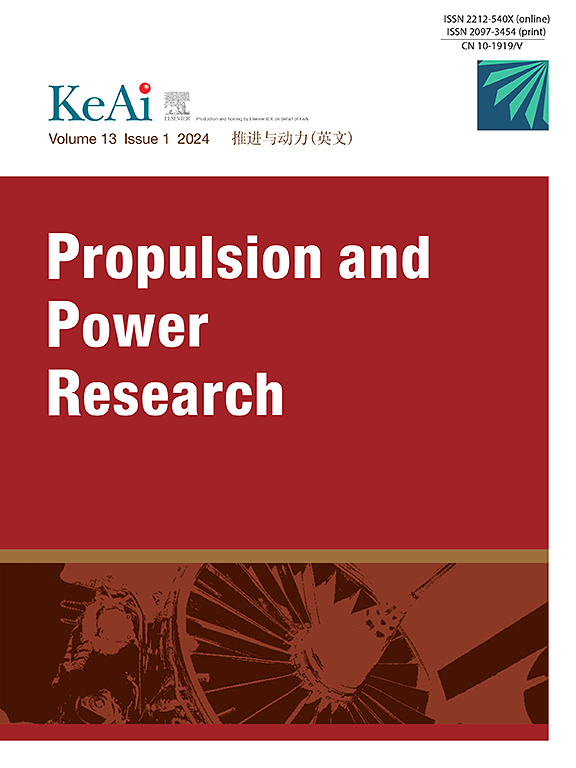Couple stress Casson ternary hybrid nanofluids in a channel with applications in medical sciences
IF 5.4
2区 工程技术
Q1 ENGINEERING, AEROSPACE
引用次数: 0
Abstract
In the past few years, there has been a notable global surge in research on nanofluids, driven by their promising thermal applications in engineering and biological sciences. Nanofluids have demonstrated promising results in enhancing heat transfer phenomena. To further enhance the thermal performance of conventional base fluids, researchers have increasingly focused on investigating the use of structured nanoparticle suspensions within these fluids. With a consideration of the potential applications of nanoparticles, this paper intends to explore the utilization of three nanoparticles with distinct shapes within a single base fluid. More precisely, three different nanoparticles with different shapes, i.e., spherical-shaped gold (Au), cylindrical-shaped zinc (Zn), and platelet-shaped ferric oxide (Fe3O4) are added to the base fluid blood because of their relative advanced pharmaceutical applications. In this study, the primary focus is to thoroughly analyze the heat transfer characteristics of an unsteady flow of a couple-stress Casson ternary hybrid nanofluid within a channel. The flow regime under investigation is represented by classical partial differential equations, which are subsequently non-dimensionalized using appropriate non-dimensional variables. To further analyze the system, the dimensionless partial differential equations are fractionally modified using Caputo's definition of fractional derivatives, incorporating Fick's and Fourier's laws, and the exact solutions for temperature, concentration, and velocity profiles are achieved by employing the Laplace and Fourier transforms. The results clearly indicate that as the volume fraction of nanoparticles increases, the fluid velocity decreases while the temperature rises. The utilization of a blood-based ternary hybrid nanofluid enhances the rate of heat transfer by up to 20%. Specifically, the inclusion of spherical-shaped gold (Au) nanoparticles rises heat transfer by up to 16%, cylindrical-shaped zinc (Zn) nanoparticles enhance it by up to 19%, and platelet-shaped ferric oxide (Fe3O4) nanoparticles enhance it by up to 23%.
通道中耦合应力卡森三元杂化纳米流体及其在医学中的应用
在过去几年中,纳米流体在工程和生物科学中的热应用前景广阔,推动了纳米流体的研究在全球范围内出现了显著的激增。纳米流体在增强传热现象方面显示出有希望的结果。为了进一步提高传统基础流体的热性能,研究人员越来越关注在这些流体中使用结构纳米颗粒悬浮液的研究。考虑到纳米颗粒的潜在应用,本文打算探索三种不同形状的纳米颗粒在单一基液中的应用。更准确地说,三种不同形状的纳米颗粒,即球形金(Au),圆柱形锌(Zn)和血小板状氧化铁(Fe3O4),由于它们相对先进的制药应用,被添加到基础液体血液中。在本研究中,主要重点是深入分析耦合应力卡森三元杂化纳米流体在通道内的非定常流动传热特性。所研究的流型由经典偏微分方程表示,随后使用适当的无量纲变量对其进行无量纲化。为了进一步分析系统,使用卡普托的分数阶导数定义对无量纲偏微分方程进行分数阶修正,结合菲克定律和傅立叶定律,并通过使用拉普拉斯变换和傅立叶变换获得温度、浓度和速度剖面的精确解。结果清楚地表明,随着纳米颗粒体积分数的增加,流体速度随温度的升高而降低。基于血液的三元混合纳米流体的使用将传热率提高了20%。具体来说,球形金(Au)纳米颗粒的加入使传热率提高了16%,圆柱形锌(Zn)纳米颗粒的加入使传热率提高了19%,片状氧化铁(Fe3O4)纳米颗粒的加入使传热率提高了23%。
本文章由计算机程序翻译,如有差异,请以英文原文为准。
求助全文
约1分钟内获得全文
求助全文
来源期刊

Propulsion and Power Research
Multiple-
CiteScore
7.50
自引率
5.70%
发文量
30
期刊介绍:
Propulsion and Power Research is a peer reviewed scientific journal in English established in 2012. The Journals publishes high quality original research articles and general reviews in fundamental research aspects of aeronautics/astronautics propulsion and power engineering, including, but not limited to, system, fluid mechanics, heat transfer, combustion, vibration and acoustics, solid mechanics and dynamics, control and so on. The journal serves as a platform for academic exchange by experts, scholars and researchers in these fields.
 求助内容:
求助内容: 应助结果提醒方式:
应助结果提醒方式:


